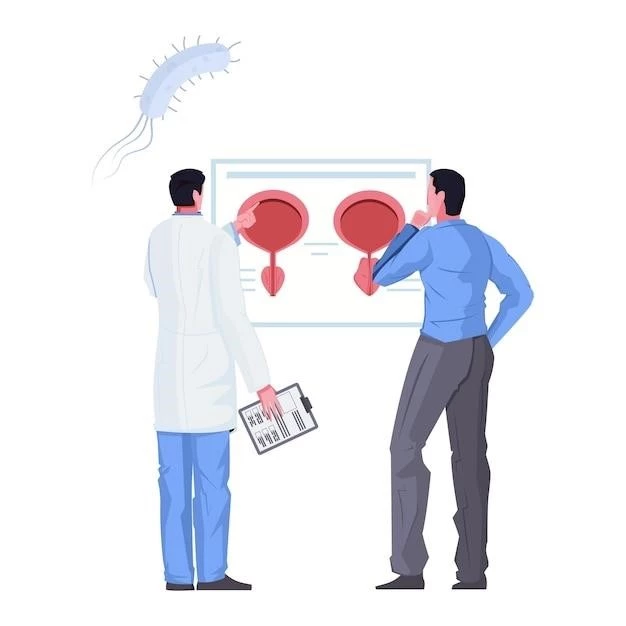Understanding Meningomyelocele
When it comes to Meningomyelocele, it is crucial to understand the complexities surrounding this condition. From the causes and risk factors to its long-term management, a comprehensive guide is essential for caregivers, medical professionals, and individuals affected by this condition. This article will delve into the various aspects of Meningomyelocele to provide valuable insights and guidance.

Overview of Meningomyelocele
Meningomyelocele, also known as Myelomeningocele, is a type of Spina Bifida categorized under Neural Tube Defects. It occurs when the spinal cord and surrounding structures fail to close properly during fetal development, leading to a gap in the spinal column. This congenital anomaly can result in paralysis, hydrocephalus due to Cerebrospinal Fluid accumulation, and various neurological impairments. Bowel and bladder dysfunction are common complications. Treatment often involves spinal surgery to repair the defect, followed by physical therapy to improve mobility and function. Occupational therapy may also be necessary to address daily living skills. Special education services can help individuals with Meningomyelocele thrive academically. Mobility aids such as wheelchairs or braces may be required to enhance independence. It is crucial to provide emotional support and social inclusion to promote well-being. Long-term management includes regular medical follow-ups to monitor for any issues and ensure optimal care. Research into new interventions and therapies is ongoing to improve outcomes for individuals with Meningomyelocele.
Causes and Risk Factors
Meningomyelocele, a type of Spina Bifida, arises from a complex interplay of genetic and environmental factors. Factors that increase the risk of developing this condition include a family history of neural tube defects, maternal folate deficiency during pregnancy, certain medications, and maternal obesity. Insufficient intake of folic acid before and during pregnancy is a significant risk factor. Understanding these causes and risk factors can help in prevention strategies, such as ensuring adequate folic acid intake before conception and throughout pregnancy. Counseling and genetic testing may be recommended for families with a history of neural tube defects to assess the risk of recurrence. Educating individuals about the importance of prenatal care and a healthy lifestyle can mitigate some of the risks associated with Meningomyelocele. By addressing and managing these factors proactively, the likelihood of developing this spinal cord developmental disorder can be reduced, promoting better outcomes for both mother and baby.
Symptoms and Complications
Meningomyelocele presents with a range of symptoms and complications that can significantly impact a person’s quality of life. Common symptoms include motor and sensory deficits, bowel and bladder dysfunction, orthopedic issues such as scoliosis, and skin breakdown due to reduced sensation. Complications may arise from associated conditions like hydrocephalus, which can lead to increased intracranial pressure and neurological deficits. Other complications can include Chiari malformation, tethered cord syndrome, and latex allergies. Recognizing these symptoms early is crucial for timely intervention and management. Regular monitoring by healthcare professionals is essential to prevent and address complications promptly. Managing symptoms effectively through a multidisciplinary approach involving neurosurgeons, orthopedic specialists, rehabilitation therapists, and other healthcare professionals can improve outcomes and enhance the overall well-being of individuals with Meningomyelocele. By addressing both the symptoms and potential complications comprehensively, individuals with this condition can lead fulfilling lives with appropriate support and medical care.
Diagnosis and Treatment
Diagnosing Meningomyelocele typically involves prenatal ultrasound screening during pregnancy or postnatal physical examination after birth. Imaging studies like MRI may be performed to assess the extent of the spinal cord defect. Treatment often begins shortly after birth with surgical closure of the opening in the spinal column to prevent infection and further damage to the spinal cord. This spinal surgery aims to protect the exposed nerves and tissues and reduce the risk of complications. Postoperatively, a multidisciplinary approach involving neurosurgeons, pediatricians, physical therapists, and occupational therapists is crucial for comprehensive care. Physical therapy plays a key role in improving motor function and strength, while occupational therapy focuses on enhancing daily living skills and independence. Regular follow-ups with healthcare providers are necessary to monitor growth, development, and any emerging issues. Early intervention is vital to address potential complications and optimize the long-term outcomes for individuals with Meningomyelocele. Through a combination of medical treatments, therapies, and ongoing support, it is possible to manage this condition effectively and promote the well-being of those affected.
Importance of Early Intervention
Early intervention is paramount in the management of Meningomyelocele to address potential complications and optimize outcomes. Timely diagnosis and treatment can prevent further damage to the spinal cord and reduce the risk of associated conditions like hydrocephalus. Early surgical intervention to repair the spinal defect is crucial in minimizing the risk of infection and neurological deficits. Initiating therapies such as physical therapy and occupational therapy soon after surgery can enhance motor skills, functional abilities, and quality of life. By intervening early, healthcare providers can monitor growth and development, identify any issues promptly, and tailor interventions to meet the individual’s specific needs. Educating caregivers and families about the importance of early intervention strategies and ongoing support can empower them to be active participants in the care process. Through a collaborative effort among healthcare professionals, families, and individuals with Meningomyelocele, early intervention can lay the foundation for a comprehensive and effective management plan, leading to improved long-term outcomes and quality of life.
Rehabilitation and Therapy
Rehabilitation and therapy play a critical role in the holistic management of Meningomyelocele. Following surgery, a comprehensive rehabilitation program is essential to promote recovery and enhance functional abilities. Physical therapy focuses on improving strength, balance, and mobility, while occupational therapy addresses daily living skills, such as self-care and fine motor tasks. These therapies aim to maximize independence and quality of life for individuals with Meningomyelocele. Rehabilitation professionals work closely with patients and their families to create personalized treatment plans tailored to specific needs and goals. Consistent therapy sessions and home exercise programs can help individuals reach their full potential and overcome physical challenges. Continued support from a multidisciplinary team, including doctors, therapists, and educators, is key in achieving optimal outcomes. By investing in rehabilitation and therapy early in the management of Meningomyelocele, individuals can build strength, improve function, and enhance overall well-being, paving the way for a more independent and fulfilling life.
Educational Support and Inclusion
Educational support and inclusion are integral components of managing Meningomyelocele to ensure academic success and social integration. Individuals with this condition may benefit from special education services tailored to their unique needs and abilities. Educators and school professionals can work collaboratively with families and healthcare providers to create Individualized Education Plans (IEPs) that address academic goals, accommodations, and specialized support services. Inclusive classroom settings and assistive technologies can enhance learning experiences and foster a sense of belonging for students with Meningomyelocele. Building a supportive educational environment that emphasizes understanding, empathy, and accessibility is essential for promoting learning and development. Empowering individuals to reach their full potential academically and socially through educational support and inclusive practices can cultivate confidence, resilience, and a sense of community. By advocating for inclusive education and providing tailored support, schools and communities can empower individuals with Meningomyelocele to thrive academically and socially, paving the way for a brighter future.
Assistive Devices and Mobility Aids
Assistive devices and mobility aids play a vital role in enhancing independence and quality of life for individuals with Meningomyelocele. Wheelchairs, walkers, orthotic braces, and other assistive technologies can provide support and facilitate mobility, enabling individuals to navigate their environment with greater ease. These devices are designed to improve functionality, promote safe movement, and reduce the risk of falls or injuries. Customized orthotic devices can help address musculoskeletal issues and improve gait patterns. Mobility aids can also aid in activities of daily living, such as dressing, bathing, and transferring. Evaluating the individual’s specific needs and functional abilities is essential in selecting the most appropriate assistive devices. Collaborating with healthcare professionals, therapists, and assistive technology specialists can help optimize device selection and training. By incorporating assistive devices and mobility aids into daily routines and environments, individuals with Meningomyelocele can enhance their autonomy, participation, and overall well-being, enabling them to lead more independent and fulfilling lives.
Emotional and Social Impact
The emotional and social impact of Meningomyelocele can significantly influence the well-being of individuals and their families. Coping with a lifelong condition like Meningomyelocele may pose challenges that extend beyond physical health. Emotional support, counseling, and access to mental health services are essential in addressing feelings of anxiety, depression, and stress that can arise. Social inclusion, peer support groups, and community engagement can help individuals with Meningomyelocele feel connected, understood, and empowered. Building resilience, self-esteem, and a positive self-image are important components of navigating the emotional aspects of living with this condition. Educating family members, caregivers, and peers about Meningomyelocele can foster empathy, acceptance, and a supportive environment. By promoting emotional well-being and social integration, individuals with Meningomyelocele can develop strong relationships, experience a sense of belonging, and thrive in various aspects of life. Encouraging open communication, destigmatizing emotions, and fostering a supportive network are crucial steps in addressing the emotional and social impact of Meningomyelocele.
Long-Term Outlook and Management
Managing Meningomyelocele requires a comprehensive long-term approach to address evolving needs and optimize outcomes. Regular medical follow-ups, monitoring for potential complications, and adjusting treatment plans as necessary are essential components of long-term management. Continuity of care by a multidisciplinary team of specialists, including neurosurgeons, rehabilitation therapists, and primary care providers, is crucial in ensuring comprehensive support throughout the individual’s lifespan. Embracing a proactive mindset toward preventive care, promoting healthy lifestyles, and fostering independence can positively impact long-term health and well-being. Advocating for individuals with Meningomyelocele to access community resources, educational support, and vocational opportunities can enhance quality of life and social integration. Engaging in ongoing research and staying informed about advances in treatment modalities can further improve long-term outcomes for individuals with Meningomyelocele. By prioritizing holistic care, collaborative management, and adaptive strategies, individuals can navigate the challenges associated with Meningomyelocele and strive towards a fulfilling and empowered future.
Research and Future Directions
Research plays a key role in advancing our understanding of Meningomyelocele and exploring innovative strategies for treatment and management. Ongoing studies focus on improving prenatal screening methods, surgical techniques, and postoperative care to enhance outcomes for individuals with this condition. Future directions include genetic research to identify potential risk factors and targeted interventions. Advances in regenerative medicine and neural tissue engineering offer promising avenues for restoring spinal function and minimizing disabilities associated with Meningomyelocele. Collaborative efforts among researchers, healthcare providers, advocacy organizations, and individuals affected by Meningomyelocele are vital in driving progress and shaping future care practices. By participating in clinical trials, supporting research initiatives, and advocating for increased funding and awareness, together, we can pave the way for a brighter future for those living with Meningomyelocele. Embracing innovation, fostering interdisciplinary collaboration, and prioritizing patient-centered research are essential in shaping the future landscape of care for individuals affected by this complex condition.
